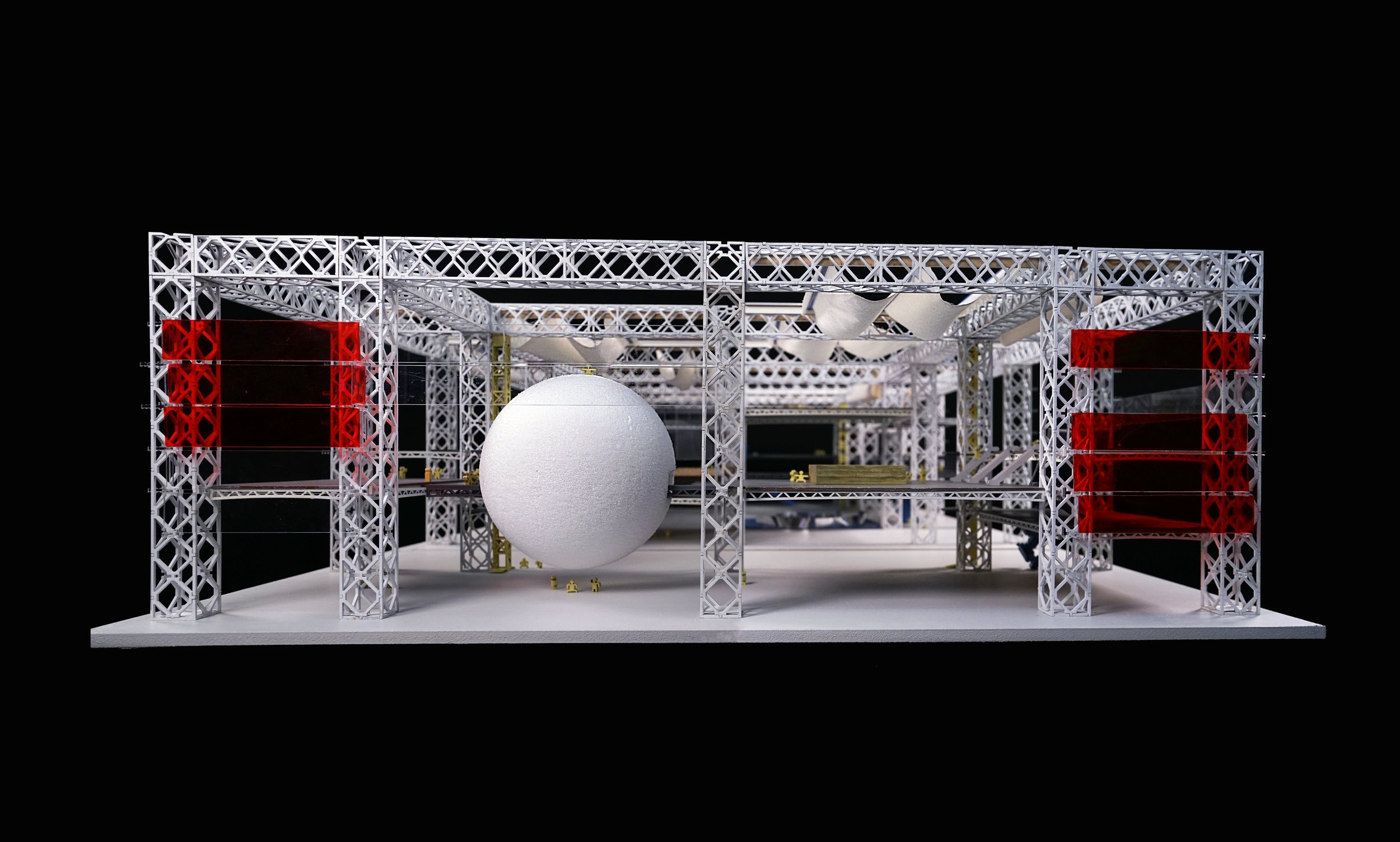Community Hearth
Architect Cedric Price and theater legend Joan Littlewood collaborated in the 1960s to develop the idea of the Fun Palace. It was an ambitious, never-realized proposal for a public space dedicated to art, learning, and entertainment that could be modified and extended in infinitely many ways. Myself and 9 other classmates collaborated to produce a 1/8”:1’ model of a section of the Fun Palace, based on Cedric Price’s drawings. We then each proposed a structure to fit within the physical and ideological framework of the Fun Palace.
Building off of the values of Price’s and Littlewood’s original vision, I proposed a set of hearths where people would cook, eat, and learn about food. I envisioned a space that could address food insecurity in the community, by providing free ingredients and and making the act of cooking fun and participatory. I built off the architectural unit of a hearth, as both a functional and sacred object. My hearths would provide space for users to learn and practice open fire cooking methods. Within a central column, an eternal flame would be maintained, representing an unending commitment to food security for the community. A continuous rammed earth wall defines the structure of the individual hearth pavilions. As wood is burnt in the hearths, ash is produced and collected. The ash, by virtue of its high calcium content, would then be refined into a stablizing agent used in the construction of the rammed earth wall, allowing the structure to grow outward and provide more hearths.











